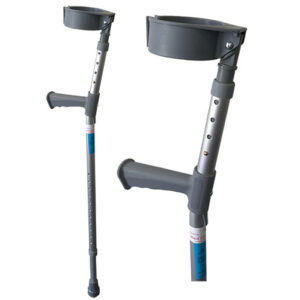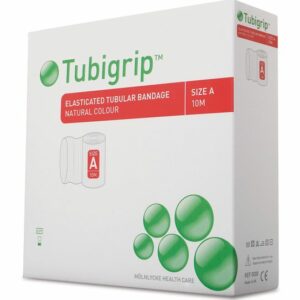Quadriceps Contusion
Updated:
(Also known as Corked Thigh, Quadriceps Bruise, Corky, Quadriceps Haematoma, Charley Horse, Dead Leg)
What is a quadriceps contusion?
A quadriceps contusion is condition that is frequently seen in contact sports and is characterised by a bruise located in the quadriceps muscle (i.e. front of the thigh – figure 1).
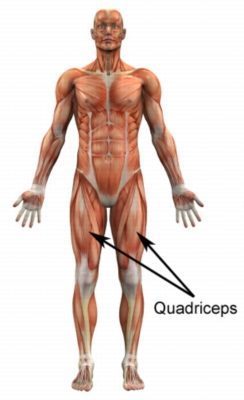
The large muscle group at the front of your thigh is called the quadriceps (figure 1). The quadriceps is responsible for straightening the knee during activity and has a rich blood supply. Following a direct impact to the quadriceps, damage to the muscle fibres, connective tissue and small blood vessels of the quadriceps may occur. This results in a ‘bruise’ to the quadriceps and is known as a quadriceps contusion.
Quadriceps contusions can range from minor contusions resulting in minimal pain and allowing ongoing activity, to severe contusions resulting in significant pain and loss of function.
Causes of a quadriceps contusion
Quadriceps contusions occur following a direct impact to the quadriceps muscle from an object or person. This most commonly occurs due to a collision with another player during contact sports, such as football or rugby, or from an impact from a ball in sports such as hockey or cricket.
Signs and symptoms of a quadriceps contusion
Patients with a quadriceps contusion usually feel a sudden pain in the quadriceps muscle at the time of injury. In minor contusions, pain may be minimal (or sometimes may go unnoticed) allowing continued activity. In more severe cases, patients may experience severe pain, muscle spasm, weakness and an inability to continue activity. Patients with a severe corked thigh may also be unable to walk without a limp.
Patients with a this condition usually experience pain during activities such as squatting, going up and down stairs, walking (especially up or down hills), running, jumping, hopping, lunging or kicking. It is also common for patients to experience pain or stiffness after these activities with rest, especially upon waking in the morning. Swelling, tenderness and bruising may also be present in the quadriceps muscle, along with an inability to bend the knee as far as usual whilst keeping the hip straight.
In severe cases, a visible increase in size of the quadriceps muscle may be detected due to bleeding and swelling. In these cases patients may be unable to sleep due to pain. Occasionally the swelling and bruising may track down to the knee joint or lower leg.
Diagnosis of a quadriceps contusion
A thorough subjective and objective examination from a physiotherapist is usually sufficient to diagnose a quadriceps contusion. Further investigations such as an MRI scan or Ultrasound may be required, in rare cases, to confirm diagnosis.
Treatment for a quadriceps contusion

Members Only ContentBecome a PhysioAdvisor Member to gain full access to this exclusive content. For more details see Become a Member. Already a member? Login Now
Prognosis of a quadriceps contusion
With appropriate management, patients with minor quadriceps contusions can usually recover in one to three weeks. With larger contusions, recovery may take four to eight weeks or longer depending on the severity of injury. In rare cases, patients with this condition can sometimes develop myositis ossificans (i.e. bony growth in the contusion). This condition is more common in severe contusions (especially those that are managed inappropriately) and may prolong recovery by weeks to months.
Physiotherapy for a quadriceps contusion

Members Only ContentBecome a PhysioAdvisor Member to gain full access to this exclusive content. For more details see Become a Member. Already a member? Login Now
Other intervention for a quadriceps contusion

Members Only ContentBecome a PhysioAdvisor Member to gain full access to this exclusive content. For more details see Become a Member. Already a member? Login Now
Exercises for a quadriceps contusion
The following exercises are commonly prescribed to patients with this condition. You should discuss the suitability of these exercises with your physiotherapist prior to beginning them. Generally, they should be performed 3 times daily and only provided they do not cause or increase symptoms.
Your physiotherapist can advise when it is appropriate to begin the initial exercises and eventually progress to the intermediate and advanced exercises. As a general rule, addition of exercises or progression to more advanced exercises should take place provided there is no increase in symptoms.
Initial Exercises
Static Inner Quadriceps Contraction
Tighten the muscle at the front of your thigh (quadriceps) by pushing your knee down into a towel (figure 2). Put your fingers on your inner quadriceps to feel the muscle tighten during contraction. Hold for 5 seconds and repeat 10 times as hard as possible provided there is no increase in symptoms.
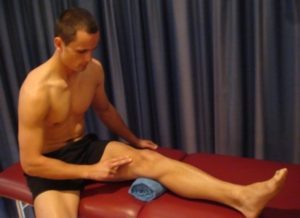
Knee Bend to Straighten
Bend and straighten your knee as far as possible without increasing your symptoms (figure 3). Repeat 10 – 20 times provided the exercise is pain free.
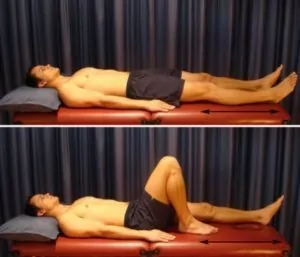
Intermediate Exercises

Members Only ContentBecome a PhysioAdvisor Member to gain full access to this exclusive content. For more details see Become a Member. Already a member? Login Now
Advanced Exercises

Members Only ContentBecome a PhysioAdvisor Member to gain full access to this exclusive content. For more details see Become a Member. Already a member? Login Now
Rehabilitation Protocol

Members Only ContentBecome a PhysioAdvisor Member to gain full access to this exclusive content. For more details see Become a Member. Already a member? Login Now
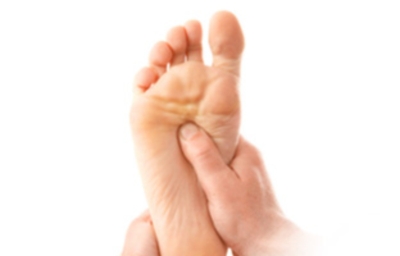 Find a Physio
Find a Physio
Find a physiotherapist in your local area to treat a quadriceps contusion.
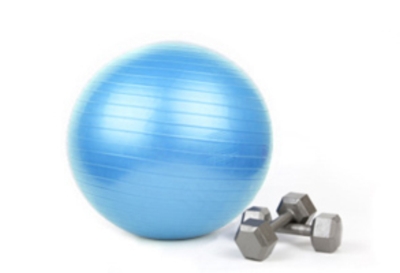 Physiotherapy products for a quadriceps contusion
Physiotherapy products for a quadriceps contusion
Some of the most commonly recommended products by physiotherapists to hasten healing and speed recovery in patients with this condition include:
Physiotherapy products that may be beneficial after the initial 72 hour period following injury and under guidance by the treating physiotherapist include:
To purchase physiotherapy products for a corked thigh click on one of the above links or visit the PhysioAdvisor Shop.
 More information
More information
- Quadriceps Stretches
- Quadriceps Strengthening Exercises
- Balance Exercises.
- How to Use Crutches.
- R.I.C.E. Regime.
- Ice or Heat.
- Return to Running Program
- Thigh Diagnosis Guide.
Become a PhysioAdvisor Member

Link to this Page
If you would like to link to this article on your website, simply copy the code below and add it to your page:
<a href="https://physioadvisor.com.au/injuries/thigh/quadriceps-contusion”>Quadriceps Contusion – PhysioAdvisor.com</a><br/>PhysioAdvisor offers detailed physiotherapy information on a quadriceps contusion (corked thigh) including: causes, symptoms, diagnosis, treatment, exercises, rehabilitation protocol, physiotherapy products and more...
Return to the top of Quadriceps Contusion.


